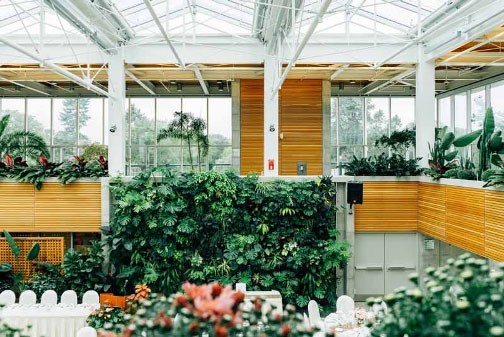|
June 2020
AutomatedBuildings.com
|
[an error occurred while processing this directive]
(Click
Message to Learn More)
|
Strategies
for a Safer and More Humane Built Environment
The
great news is that we have the technology to make our
buildings safer and adaptable in order to
minimise transmission of
COVID-19
|
 Philip
R. Juneau Philip
R. Juneau
Chief Commercial Officer
Automated
Technology Company (ATC),
Vice President
KNX USA National Group
This
article excerpt appears courtesy of KNXtoday.com |
This article excerpt
appears courtesy of KNXtoday.com
Thanks
to COVID-19, we are experiencing change in so many ways, which has left
us
feeling uneasy, to say the least. As we very cautiously enter back into
social
and business environments, we are not sure what our future interactions
will be
like. With so much information being thrown our way, deciphering it all
in order
to adjust our lifestyles can be daunting.
Despite
all of this, the great news is that we have the technology to make our
buildings
safer and adaptable in order to minimise transmission of COVID-19 and
other
viruses; my previous articles demonstrate how KNX and its peer
protocols and
standards can achieve this. To properly implement the technology, we
need to
move towards a performance-based solutions approach, as opposed to
solely
technology based on a first-cost approach. This is where
value-engineering must
come into focus.
For
a safer environment, we need to implement strategies within the design,
implementation and operation of our buildings, as follows:
-
Enforcement of Indoor Air Quality (IAQ).
- Building technology adaptation to spatial dynamics.
- 'Green-up' to augment technology with biophilia.
I
believe that all three strategies, when implemented together, can
combat future
pandemics by reducing viral transmission and allowing flexibility of
occupancy.
Enforcement
of IAQ
IAQ
is nothing new - it has been addressed extremely well over the years to
deal
with what is known as Sick Building Syndrome (SBS). SBS is blamed when
people
suffer from headaches and respiratory problems, attributed to unhealthy
or
stressful factors in the built environment. There may be myriad reasons
for it,
but it is mainly due to an inadequately designed, operated, or
maintained HVAC
system. I have often seen properly-designed HVAC systems in new
building
projects being adapted due to budget constraints or under-fulfilment of
specifications, without consequence. This can no longer be tolerated if
we are
to provide safe, comfortable and efficient buildings.
All
we need to do is hold true to the standards required and we avoid SBS
whilst
providing the contrary – a healthy, sustainable environment. Being in
building
controls, it is crucial to have HVAC systems which provide
more-than-adequate
air exchange capacity, coupled with outdoor air, and temperature and
humidity
supply to occupied spaces. Naturally, these functions come at
additional cost
to the status-quo systems which are not mechanically able to provide
them – even
with the best controls – but they actually cost less overall from a
lifecycle
perspective (i.e., investment plus operational costs over the equipment
lifetime).

Image
– energy standard
Caption
- Example of a building standard - the European Norm (EN) EN15232 that
supports
a healthy building and alleviating SBS (sources: (1) KNX Association
(2)
Building Automation and Control (BAC) efficiency classes to standard EN
15232).
Building technology adaptation to
spatial dynamics
Now
that we have covered IAQ within the space, let's look at the new
conditions
within the building, i.e., the spatial dynamics. Specifically,
occupancy of the
building will require flexibility of the space in order to adhere to
distance
requirements, which future standards will dictate. The technology
exists to be
able to adapt to such fluctuating 'core business' activities such as
meetings,
individual workplaces, dining, and other common areas. For HVAC and
lighting
controls, this means that we should provide control down to the
end-device
level, i.e. the air diffuser/box and lighting luminaire.
For
example, a common area having flex-desks for salespeople, who are
mostly on the
road, will require a 'home-base' for administration and collaborative
meeting
purposes; this is nothing new. However, such office space in the future
may be
structurally adaptable with flexible partitioning, and mobility of both
desks
and IT technology. If this is the case, the space itself will be fully
adaptable for HVAC and lighting (both artificial and natural
daylighting),
since we are able to control down to the occupant space level.
Adaptation to
these dynamic spatial requirements mandates flexibility of this nature,
so we
only need to employ the technology based on the said functional
dynamics within
the building.

Image
– building adaptation
Caption
- Building adaptation to a dynamic working environment, whilst ensuring
safety,
comfort and efficiency within the building (source:
Automated Technology Company (ATC)
www.atcjomo.com).
Green-up
to augment technology with
biophilia
Interior
'plantscaping' may not be the realm of building trade engineering
consultants
and contractors, but it is a crucial part of the mix. Employing plants
together
with building technology not only augments IAQ but also creates an
ideal work
environment for employees by connecting them back to nature. The term
'biophilia' was coined by the Harvard naturalist Dr Edward O. Wilson to
describe what he saw as humanity's 'innate tendency to focus on life
and
lifelike processes, and to be drawn toward nature, to feel an affinity
for it,
a love, a craving' (source: Miriam Webster dictionary). Being
technically-minded, I was completely unaware of biophilia until
introduced to the
concept by my green-fingered sister.

Image
- biophilia
Caption
- Biophilic design within the building – the natural,
aesthetically-pleasing
and healthy way to augment artificial HVAC systems (source: Cityscapes
www.bostoncityscapes.com/portfolio/biophilia/)
To continue reading, click here <knxtoday.com/2020/07/16220/view-from-america-strategies-for-a-safer-and-more-humane-built-environment.html>
About the
Author
Philip R. Juneau is the Chief Commercial
Officer
for Automated
Technology Company (ATC), and Vice President of the KNX USA National
Group. ATC's mission is to transform today's buildings into tomorrow's
net-zero infrastructure by ensuring the highest levels of safety,
comfort and efficiency for the overall well-being of the occupants and
the overall environment.
footer
[an error occurred while processing this directive]
[Click Banner To Learn More]
[Home Page] [The
Automator] [About] [Subscribe
] [Contact
Us]

